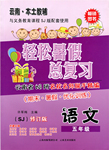题目内容
---Oh, you sounded just like a native.
---_________. I still have trouble expressing myself.
A. Well, not quite B. I don’t care
C. Yes, you’re right D. I’m glad you like it.
练习册系列答案
 轻松暑假总复习系列答案
轻松暑假总复习系列答案
相关题目
题目内容
---Oh, you sounded just like a native.
---_________. I still have trouble expressing myself.
A. Well, not quite B. I don’t care
C. Yes, you’re right D. I’m glad you like it.
 轻松暑假总复习系列答案
轻松暑假总复习系列答案